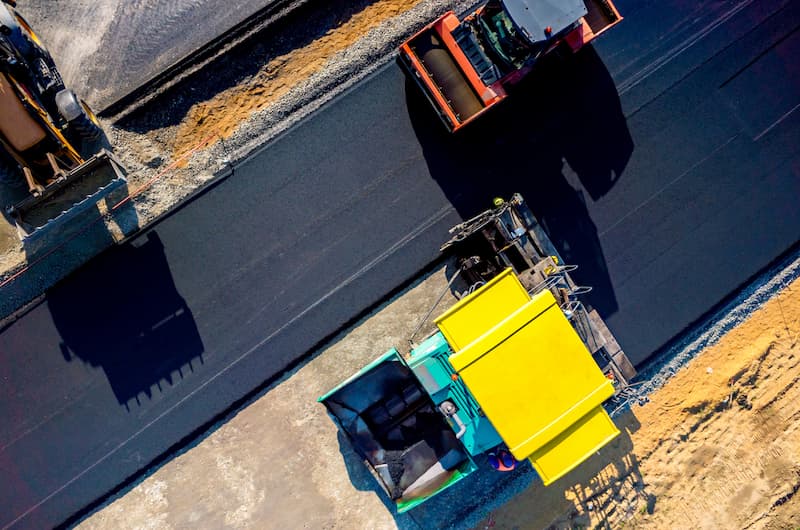Not known Facts About A1 Professional Asphalt & Sealing Llc
Table of ContentsGetting The A1 Professional Asphalt & Sealing Llc To WorkThe 3-Minute Rule for A1 Professional Asphalt & Sealing LlcThe 6-Minute Rule for A1 Professional Asphalt & Sealing LlcUnknown Facts About A1 Professional Asphalt & Sealing Llc3 Simple Techniques For A1 Professional Asphalt & Sealing Llc

The oil in an auto engine is not just oil. It consists of a selection of additives to boost the automobile's efficiency. These include polymers, viscosity modifiers, warmth stabilizers, extra lubricants, and wear additives. The REOB has all the ingredients that were in the waste oil in addition to the wear metals from the engine (generally iron and copper).
Nevertheless, by making many blends utilizing various REOB examples and various asphalt binders, the variations mainly can be averaged out. A number of States supplied samples of recognized REOB make-up to TFHRC scientists, who analyzed the examples to contrast the percent of included (understood) REOB to the found (evaluated) amount. The analyses showed a similar portion of added and discovered REOB.
How A1 Professional Asphalt & Sealing Llc can Save You Time, Stress, and Money.
None of those States understood that the asphalt they were getting included REOB. One State insisted its examples had no REOB - https://www.intensedebate.com/people/a1asphaltseal.
Of the 1,532 samples evaluated, 12 percent consisted of REOB, and some had considerably high degrees of it at 1020 percent. The highest degree was 34 percent in a sample from Texas, which TxDOT had actually used in a patching compound. This testing likewise revealed the existence of phosphoric acid in 11 percent of the examples, and 2 percent included ground tire rubber.
Two years back at TRB's annual meeting, the Federal scientists held an REOB workshop and presented the searchings for of their research laboratory evaluations to a standing room-only crowd. Some companies do not especially ban REOB, they do enforce physical examinations that preclude its useeffectively a restriction. Others do not ban it by specification, but have agreements with asphalt providers to prevent using REOB
Some Known Questions About A1 Professional Asphalt & Sealing Llc.
Ohio and Texas limit levels to much less than 5 percent of the asphalt. To develop a trustworthy test method that all States can make use of, the TFHRC scientists set up a round-robin examination strategy.
In overall, the scientists prepared and shipped 720 blends. The participants are examining the samples independently utilizing the standards provided by the TFHRC researchers. The round-robin screening is virtually finished, and TFHRC remains in the procedure of accumulating the outcomes. The outcome will certainly be a suggested AASHTO examination technique that any type of State can adopt and use (what is cold mix asphalt).
The pavement with REOB, which is located 0.6 mile (1 kilometer) from the sidewalk without REOB, has the same subgrade, web traffic density, and environment. The section of Highway655 with 5 to 10 percent REOB showed significant breaking. In this instance, the existence of REOB was the determined reason for cracking at a low temperatures.
"In our experience in Canada, even little quantities of 23 percent can be an issue." In a similar way, a section of examination sidewalk in Minnesota (MN1-4) found to contain REOB also split too soon. The sidewalk performed well for the very first 3 to 4 years, yet then began to crack. This pavement is likewise subject to low temperature levels.
Some Known Incorrect Statements About A1 Professional Asphalt & Sealing Llc
The tests were not substantial, however they showed that at degrees of 6 percent or more, the tensile toughness of the asphalt went down significantly. At a level of 3.5 percent REOB, the variant in the physical examination approaches was higher than the result of REOB. As a matter of fact, it was hard for scientists to examine whether REOB was existing.

One binder parameter considered is the distinction in between the reduced temperature vital spec temperature for stiffness (S) in the bending light beam rheometer and the flexing beam of light rheometer creep slope (m-value) noted as check this site out Tcritical. TC = TC (S) TC (m-value). Evaluation of this criterion is still recurring. Two independent research study teams, one from AASHTO and the various other from the Asphalt Institute, ended that more research is required on using REOB in asphalt.
Formerly, all asphalt testing determined engineering residential properties such as stiffness. These examinations do not show what products had been contributed to the asphalt. One sample gotten during the TFHRC research study had a very odd analysis. The example had the following test outcomes: Superpave PG 64-28 with a high temperature quality of 67.3 Tcritical on the bending beam of light rheometer was 6.7 degrees Celsius.

All About A1 Professional Asphalt & Sealing Llc
These outcomes show there are weak points in the standardized engineering testing protocols that may be manipulated. The manufacturer might have an economic benefit and the product passes all the standard examinations, however the product may not be useful to guaranteeing long-term performance. To address this issue and the expansion of new asphalt additives and extenders, TFHRC is starting a research program to make use of portable spectroscopic gadgets, x-ray fluorescence spectroscopy, and Fourier transform infrared spectroscopy to make it possible for evaluations to be performed in the field as opposed to having to take samples back to the laboratory.